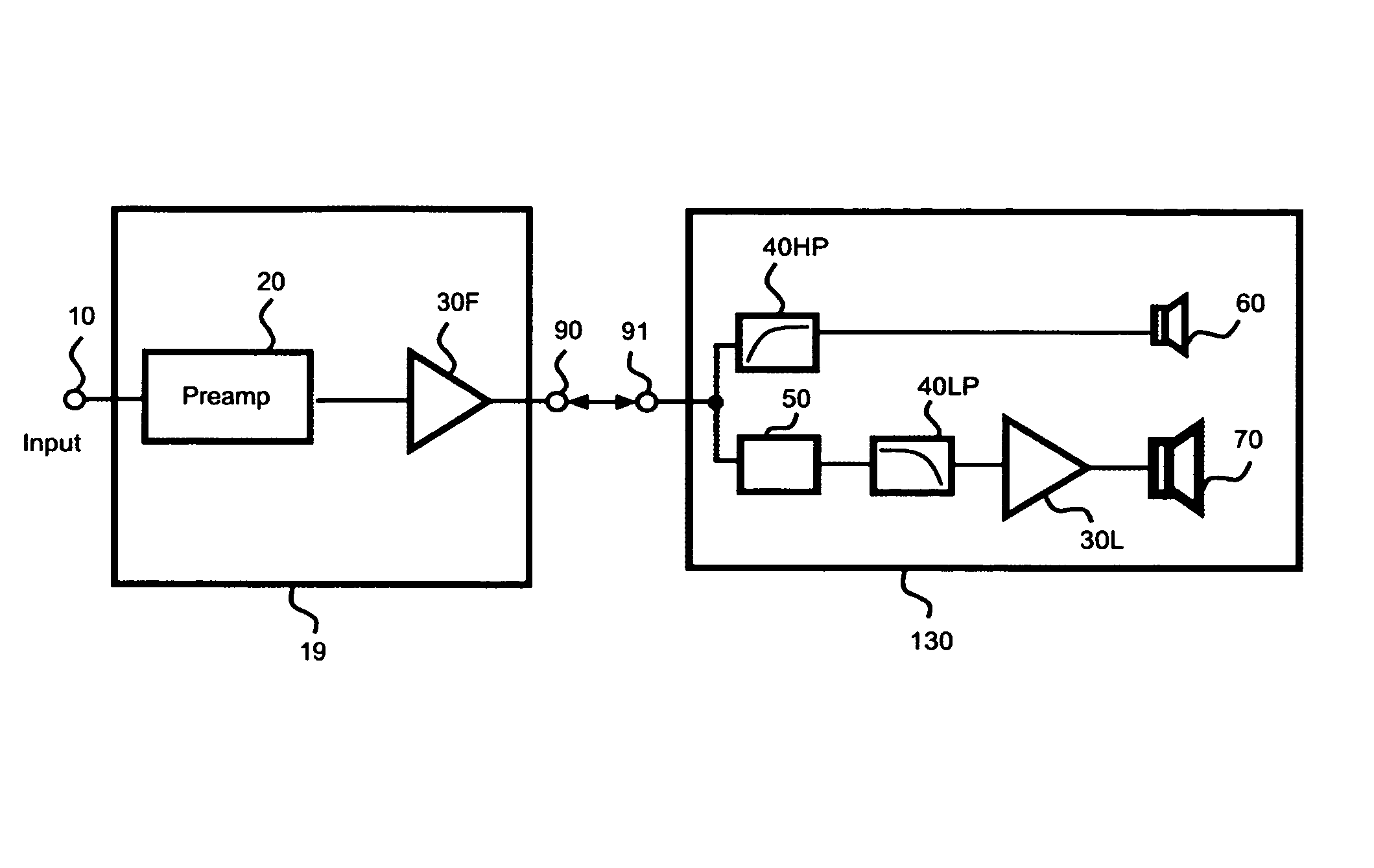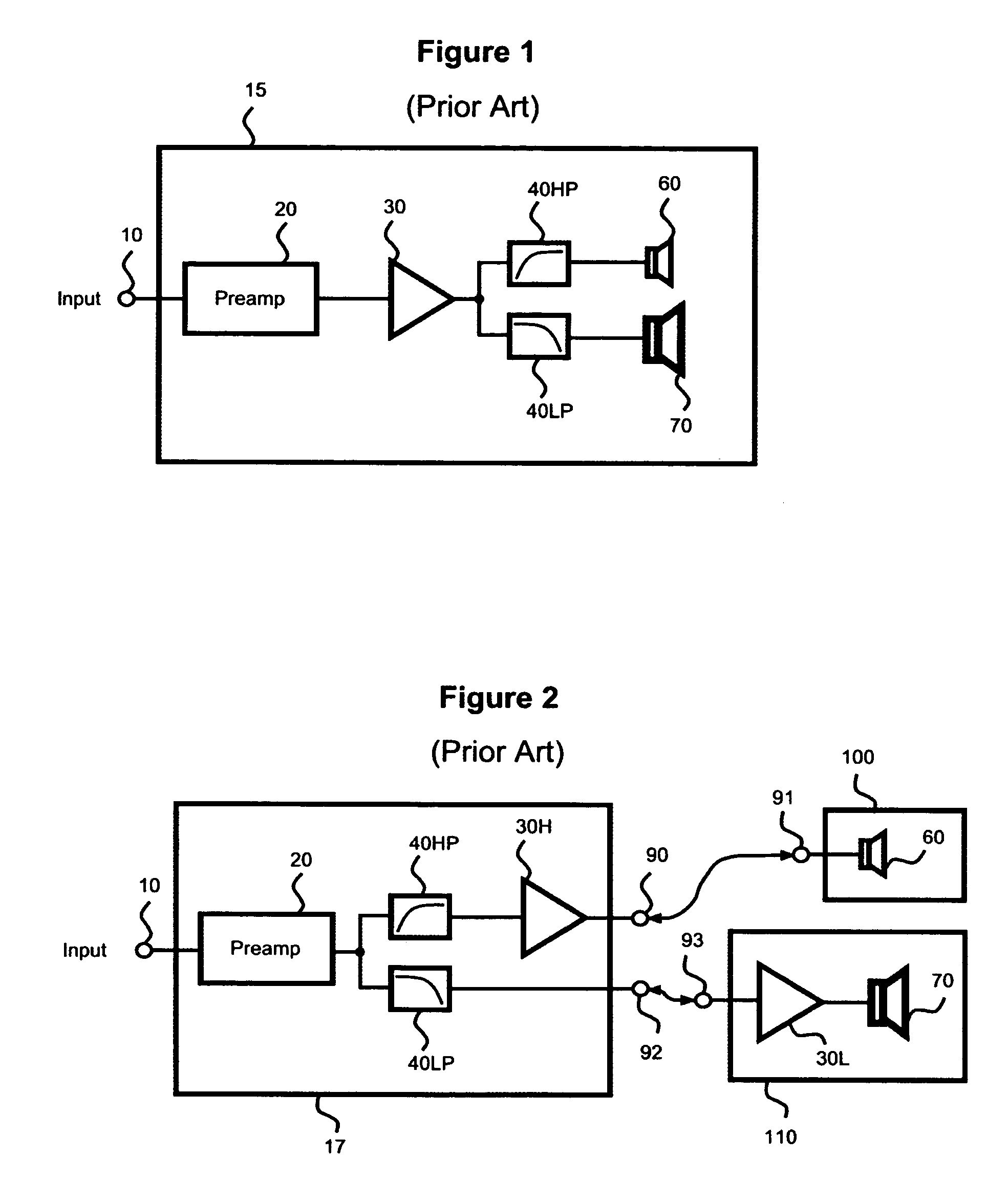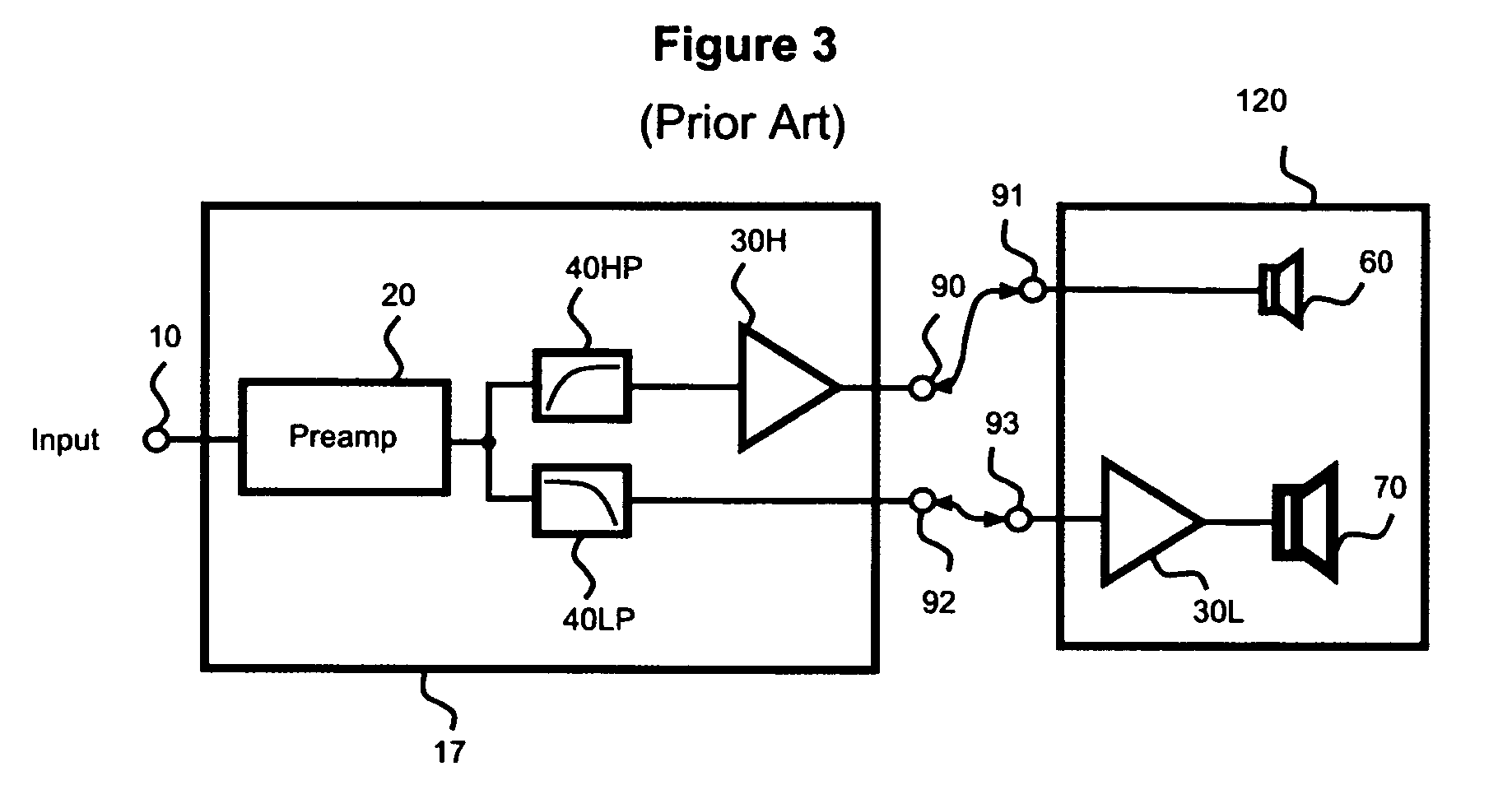Active instrument subwoofer system for low frequency enhancement
a technology for subwoofers and active instruments, applied in the direction of transducer details, instruments, electrophonic musical instruments, etc., can solve the problems of not keeping up with the desire of musicians to reproduce these low frequencies, most guitar and instrument amplifiers fall far short of the ability to reproduce the fundamental frequency of even the de-tuned standard, and few if any can reproduce the fundamental frequency of a de-tuned 7-string guitar. , to achieve the effect of enhancing the low
- Summary
- Abstract
- Description
- Claims
- Application Information
AI Technical Summary
Benefits of technology
Problems solved by technology
Method used
Image
Examples
first embodiment
[0016]Referring now to FIG. 4, the current invention is shown where block 19 may be any commonly used instrument amplifier, which includes the preamplifier 20 receiving its input signal from the input connector 10. The output of the preamplifier 20 is a full-range signal including the entire spectrum of the signal. The full-range output of the preamp 20 feeds an internal full-range amplifier 30F whose output signal appears at the output connector 90. The full-range amplified signal at the connector 90 is connected via a single speaker connector to the input connector 91 of a speaker system 130. The signal at the input connector 91 is fed to both the high-pass filter 40HP and the attenuator 50. The input signal attenuator 50 can be either a simple single ended attenuator or, as will be described in greater detail with respect to FIG. 6, may alternatively be a differential attenuator allowing for the connection of an instrument amplifier incorporating a differential or bridge output p...
second embodiment
[0017]Referring now to FIG. 5, the invention is shown wherein block 19 again represents any common instrument amplifier that the musician may select. Instrument amplifier 19 includes the preamplifier 20 receiving its input signal from the input connector 10. The output of the preamplifier 20 is a full-range signal including the entire spectrum of the signal. The full-range output of the preamp 20 feeds the internal full-range amplifier 30F with the output signal appearing at the output connector 90. The output of the instrument amplifier 19 is connected to the input of the subwoofer speaker 130S via an input connector 91. The input signal at connector 91 is internally connected to both impedance selector switch 55 and the signal attenuator 50. The input signal attenuator 50 can be either a simple single ended attenuator or, as will be described in greater detail with respect to FIG. 6, may alternatively be a differential attenuator allowing the use of instrument amplifiers incorpora...
PUM
 Login to View More
Login to View More Abstract
Description
Claims
Application Information
 Login to View More
Login to View More - R&D
- Intellectual Property
- Life Sciences
- Materials
- Tech Scout
- Unparalleled Data Quality
- Higher Quality Content
- 60% Fewer Hallucinations
Browse by: Latest US Patents, China's latest patents, Technical Efficacy Thesaurus, Application Domain, Technology Topic, Popular Technical Reports.
© 2025 PatSnap. All rights reserved.Legal|Privacy policy|Modern Slavery Act Transparency Statement|Sitemap|About US| Contact US: help@patsnap.com



